A History for the Future
February 24, 2021
By Elsa Wenzel
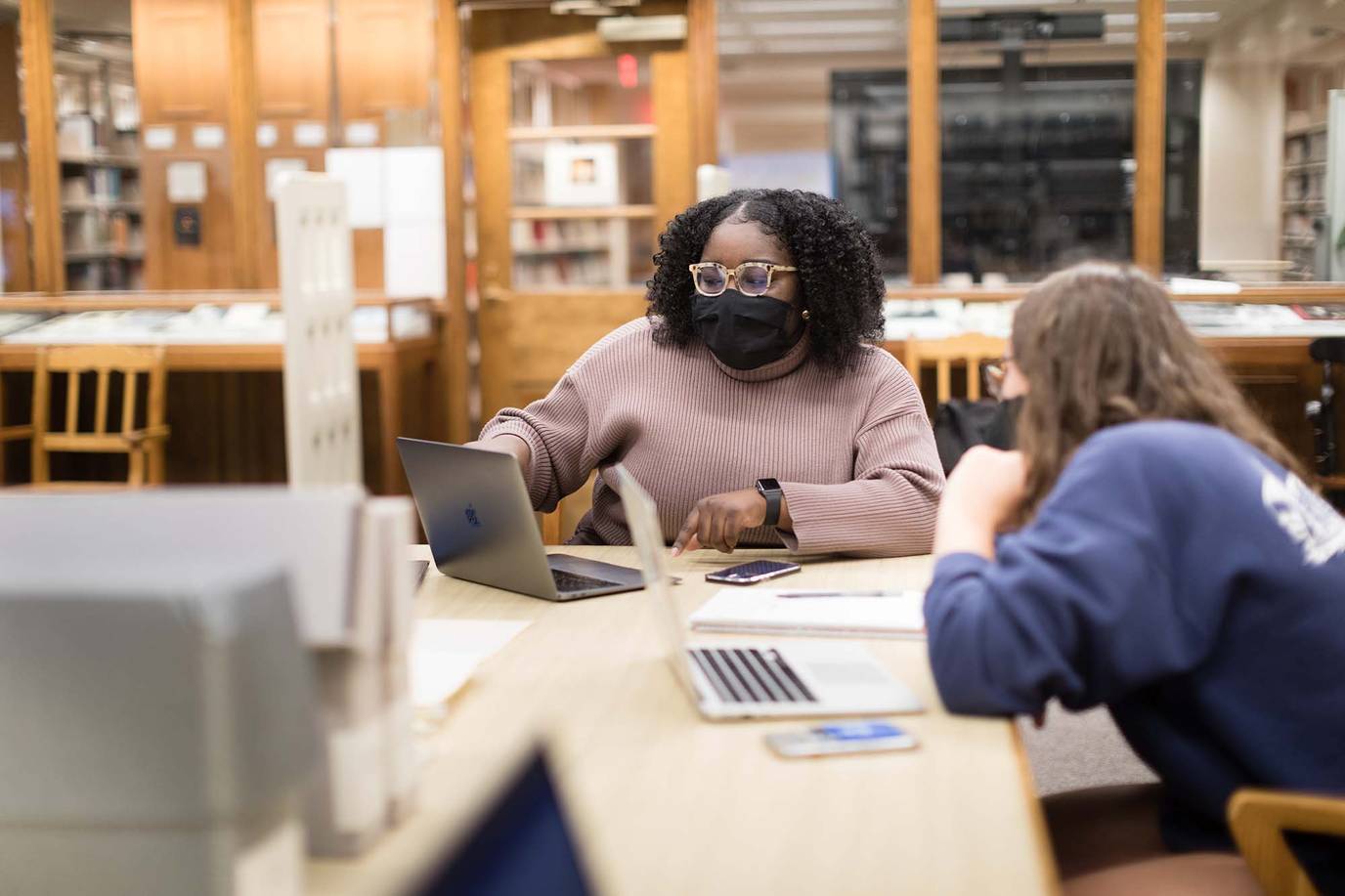
Rollins faculty, staff, and students are engaging in real-world research to uncover untold stories from the Great Migration for an original art installation coming to campus next year.
Legendary voices like Maya Angelou and Langston Hughes are household names, but what about Rita Dove and Countee Cullen? These Black poets are among hundreds of influential figures being explored by Rollins faculty, staff, and students for a groundbreaking new project from the famed British-Nigerian artist Yinka Shonibare.
Commissioned by Barbara ’68 and Ted Alfond ’68, the final artwork will be part of the Alfond Collection of Contemporary Art and will be installed in 2022 in Kathleen W. Rollins Hall. The visual and historical masterpiece will feature a collection of 600 hardcover books, each bound in dazzling African wax paper and bearing the name of a poet, philosopher, or historian with personal or ancestral ties to the 20th-century Great Migration when 6 million African Americans fled the South in search of a better life.
Heading up the project is history professor Claire Strom, who has assembled an interdisciplinary team of faculty and staff advisors as well as a group of 12 student interns who will conduct the research throughout the spring semester.
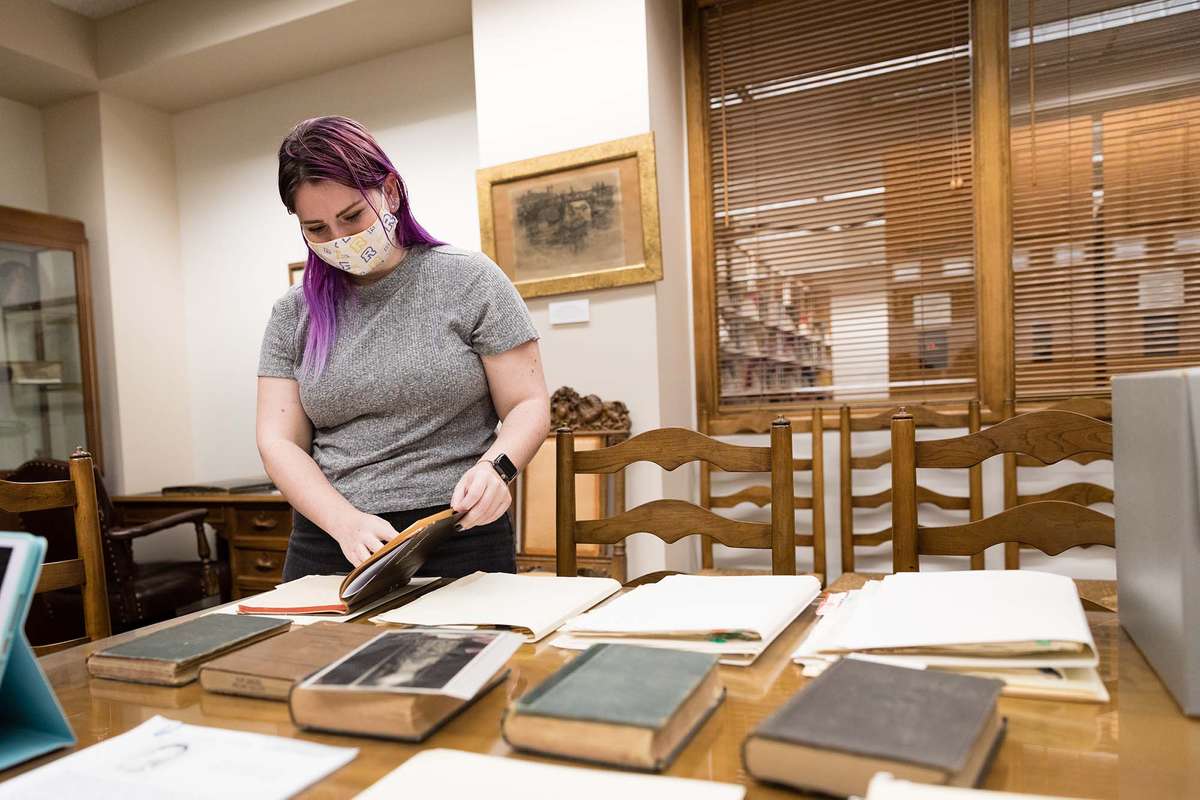
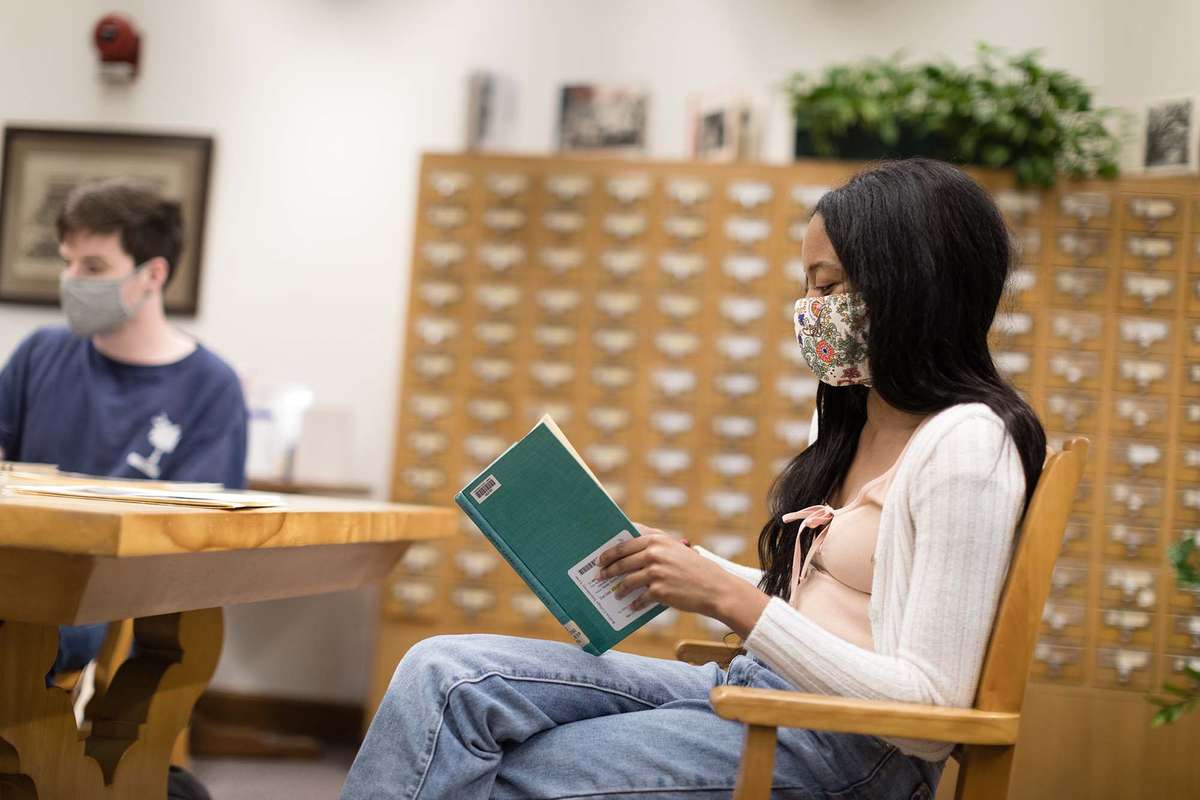
Real Research
“Shonibare is hugely famous,” says Strom. “It’s exciting that students are being able to help create this piece of art that is going to exist for a long time and to define, through whom they choose, what we mean by the Great Migration.”
The majority of the figures will be portraits of success and struggle, innovation and inspiration, celebrating well-known figures alongside the previously unsung. In some cases, interns have been able to speak with contemporary subjects in real time to confirm that their ancestors had relocated in the right time period.
As a foil, 10 percent of the names will be of Great Migration “detractors,” who stood against the outflow of African Americans from the South. That might include, for example, the distinguished Florida educator Mary McLeod Bethune, who advocated for improving conditions throughout the southern states. Other negative “detractors” may include politicians or business leaders allied with Jim Crow restrictions.
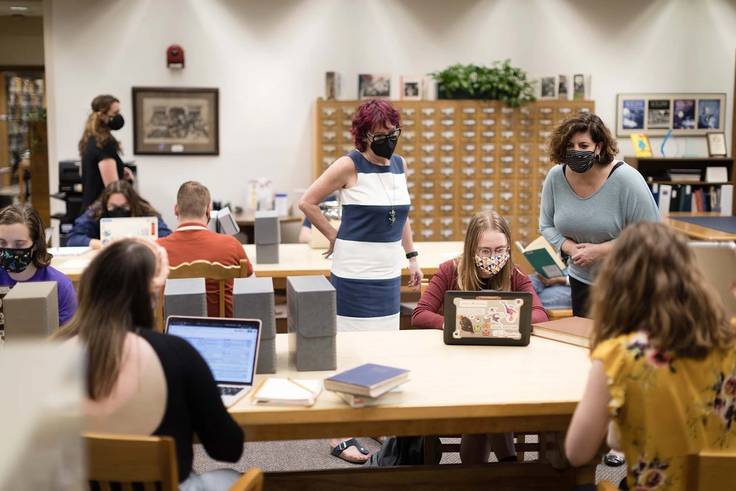
“Even for those who are knowledgeable about the Great Migration and know many of the poets, philosophers, and historians, this is an opportunity to open the door to learn more and to be aware of how the stories are relevant and timely,” says Gisela Carbonell, curator of Rollins’ Cornell Fine Arts Museum.
Each student intern is diving into a multitude of sources to find names of subjects whose ancestors had left any of the 17 southern states between 1910 and 1968, tuning into sources like the trailblazing Chicago Defender newspaper, founded in 1905, along with New York Times obituaries, Ancestry.com, and the Journal of African American History.
“It’s rewarding to see your efforts pay off and be able to add another person to the spreadsheet,” says Sendy Neika Sejourne ’23, a health services leadership and management major whose career pursuits include researching minority health and health equity. “The biggest challenge for me is tracing their steps and reasoning for migrating north. When I write short biographies on each person, I must explain why they moved and what benefits leaving the South and migrating north has provided them.”
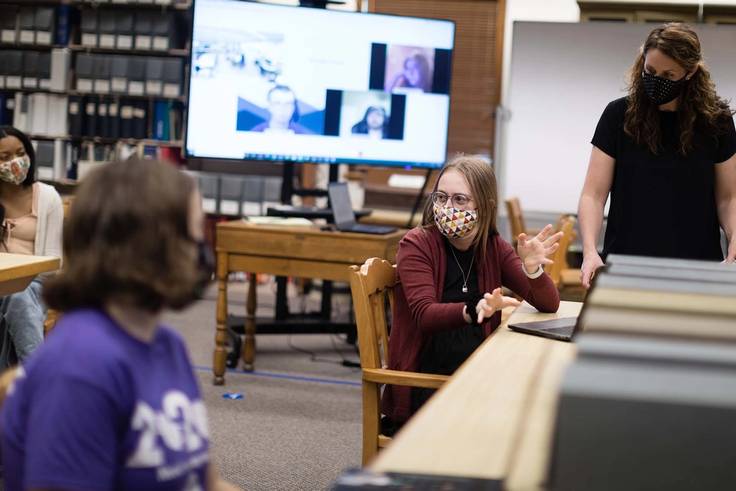
Collaboration in Action
The research project is a collaborative effort driven by students, faculty, and staff across departments, fields, and majors from art and sociology to history and health. Each student intern spends five to 10 hours a week sharpening their information literacy to evaluate biographical details.
Acting as a guide, associate professor and research librarian Susan Montgomery continually reminds the students to ask themselves if the content is coming from a reputable source.
“The information will be part of a public display,” says Montgomery, “so they need to check and sometimes double-check their information to be sure the content is accurate and reliable.”
Not only is the project a collaboration between Rollins faculty, staff, and students, but it’s also a cross-continental collaboration with the London-based artist himself, who embraces multiple cultures in his work while tackling postcolonialism, climate change, and other weighty topics.
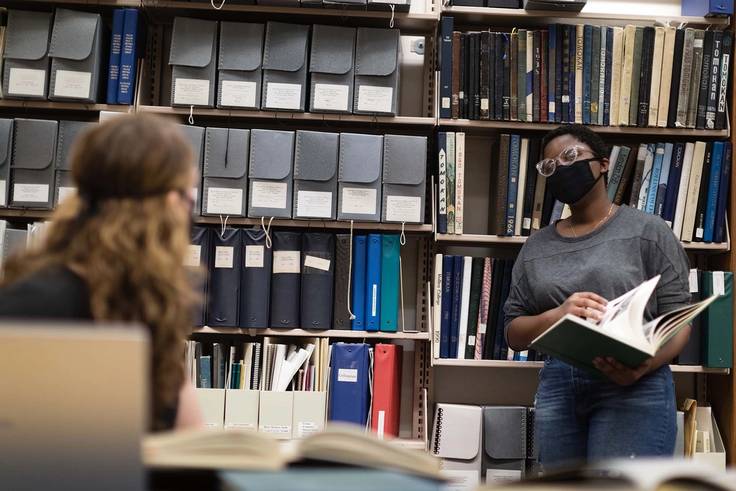
In his work—which has appeared everywhere from the Museum of Modern Art in New York City to the Victoria & Albert Museum in London—Shonibare says he focuses on the idea of a hybrid rather than a forced categorization of concepts or events. For example, the backstory of African wax print textiles, whose vibe has become a symbol of pride in Black heritage, is part of his statement on globalism.
“The history is such that the design comes from Indonesia, the manufacturing comes from the Netherlands, and then they were just sold to West Africa starting in the late 19th century,” says art history professor Mackenzie Moon Ryan, who wrote her master’s thesis on Shonibare and his work. “It doesn’t have to be one-dimensional. It can be a messier product that’s designed in one place, manufactured in another, but adopted and really embraced as part of the sign of identity that transcends one geographic region.”
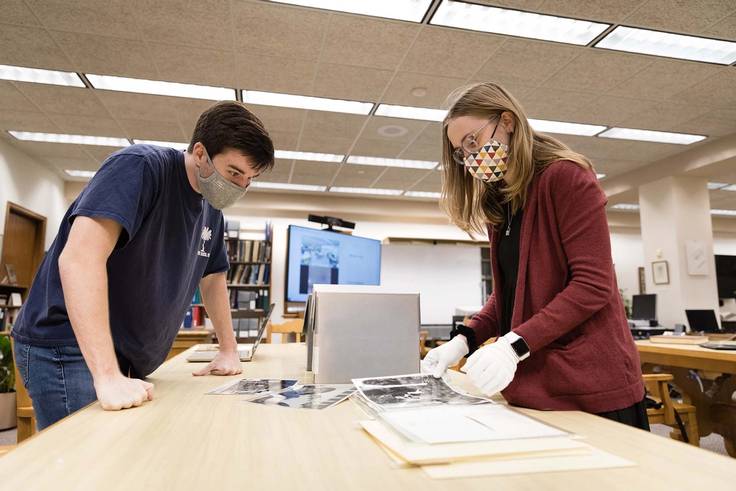
Tangible Takeaways
History and art history double major Konner Ross ’21 is an investigator by nature, even if it brings up painful historical legacies that have shaped so many portraits of success.
“There’s the fact that people in the Great Migration, people on these book spines, lived in Florida and had such oppressive lives that they left to find opportunity,” she says. “It’s important to recognize your place in history and not ignore the fact that where we live was an oppressive place for a long time, and for some it still is.”
Artis Gunn ’22 appreciates the timing of this project in light of the rise of human rights movements such as Black Lives Matter. The double major in history and English says his focus on finding poets tied to the Great Migration is already helping inform his eventual goal of becoming a professor.
“One of the beautiful parts about this project is that we are shedding light on the multiple contributions African Americans have made to society,” says Gunn, “and we’re bringing their works to Rollins so that hopefully they’ll reach a wider audience.”
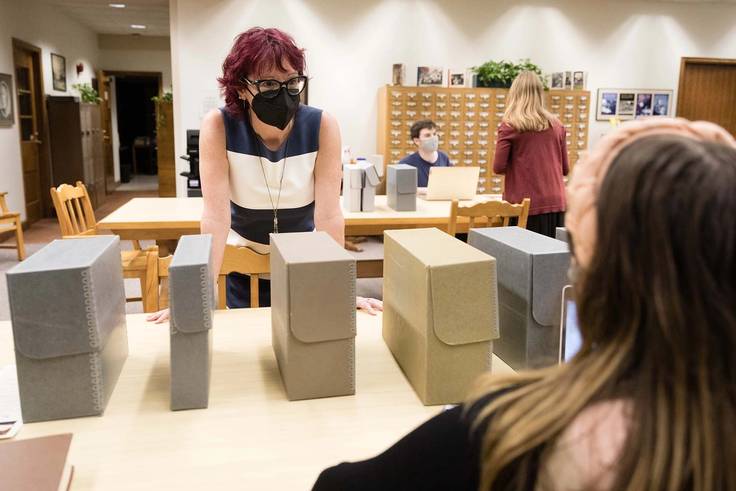
Next Steps
Once the Rollins research team completes their work later this year, they will share the chosen 600 biographies with Shonibare’s team. In London, the artists will begin the next phase of coating 600 books with wax print paper, gold-embossing onto the spines the names of the pivotal African Americans who shaped the American cultural landscape, and eventually assembling and shipping it all to the College.
The final piece for Rollins will be a part of Shonibare’s series, “The American Library,” which features an earlier installation of 234 books that represent activist authors. The collection echoes Shonibare’s “British Library” collection, housed at London’s Tate Modern, where 6,328 books symbolize immigrants to Britain from across the globe.
In 2022, the Great Migration piece of “The American Library” will find an apt home in Rollins’ headquarters of engaged learning, Kathleen W. Rollins Hall, where it will invite exploration and inquiry for years to come. The permanent work will include interactive biographies featured on an accompanying iPad, and anyone who seeks to contribute a story of their own can expand the virtual library.
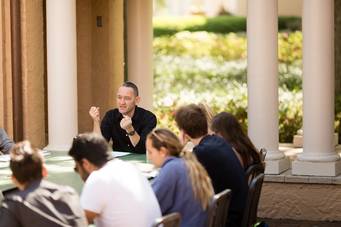
See for Yourself
Get a feel for Rollins’ unique brand of engaged learning and personalized attention through one of our virtual or in-person visit experiences.
Read More
May 07, 2024
Bradshaw and Ruby Honored with Thaddeus Seymour Staff Award for Community Engagement
The award is granted annually to the staff member(s) who has transformed our community through community engagement.
May 07, 2024
Justice and Teske Named Supervisors of the Year
This award recognizes the hard work and dedication of the members of the Rollins community who manage student employees.
May 07, 2024
Chamberlin Named 2024 Rollins Well-Being Champion
The award recognizes a Rollins faculty or staff member for being a role model in the area of well-being.
